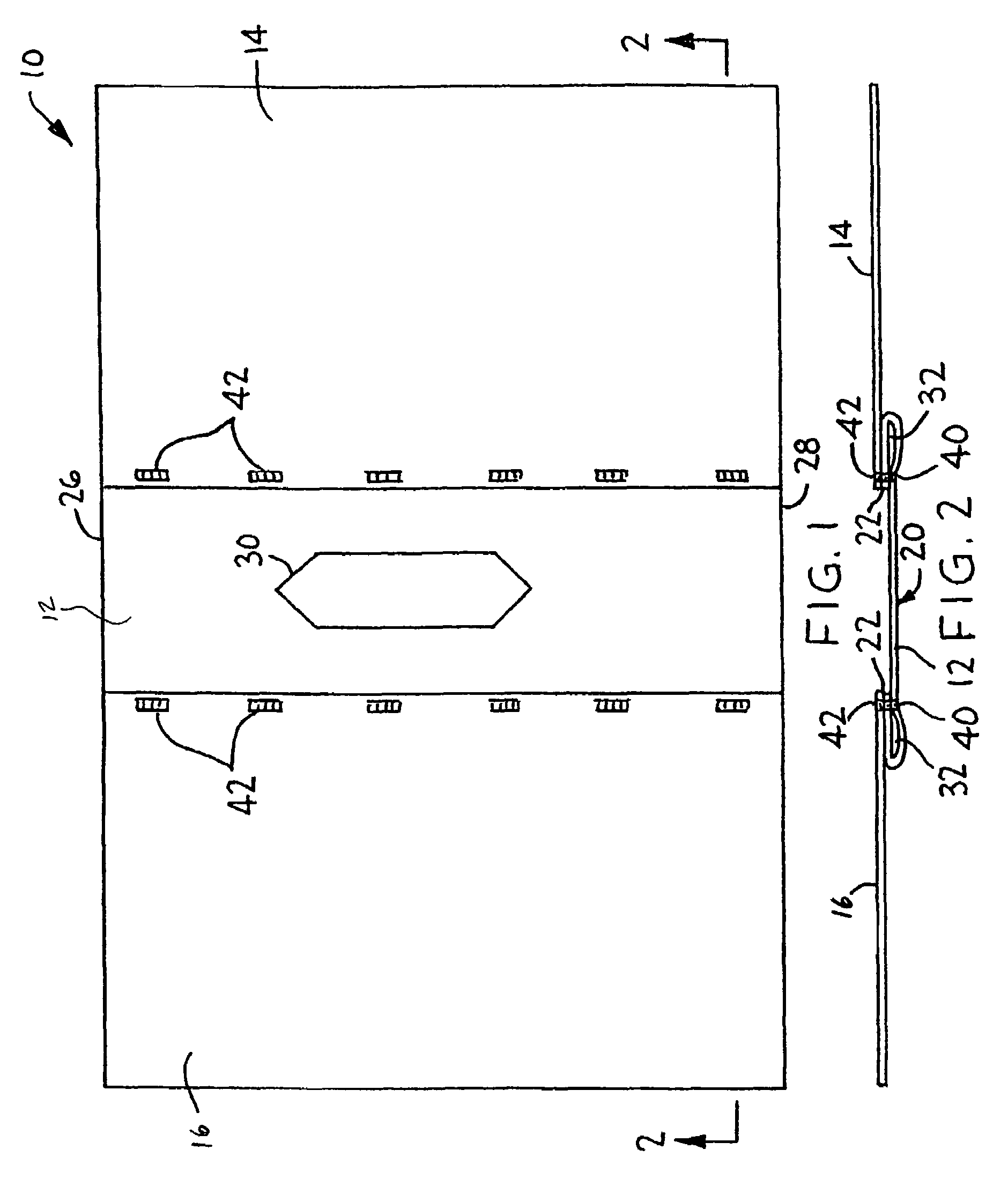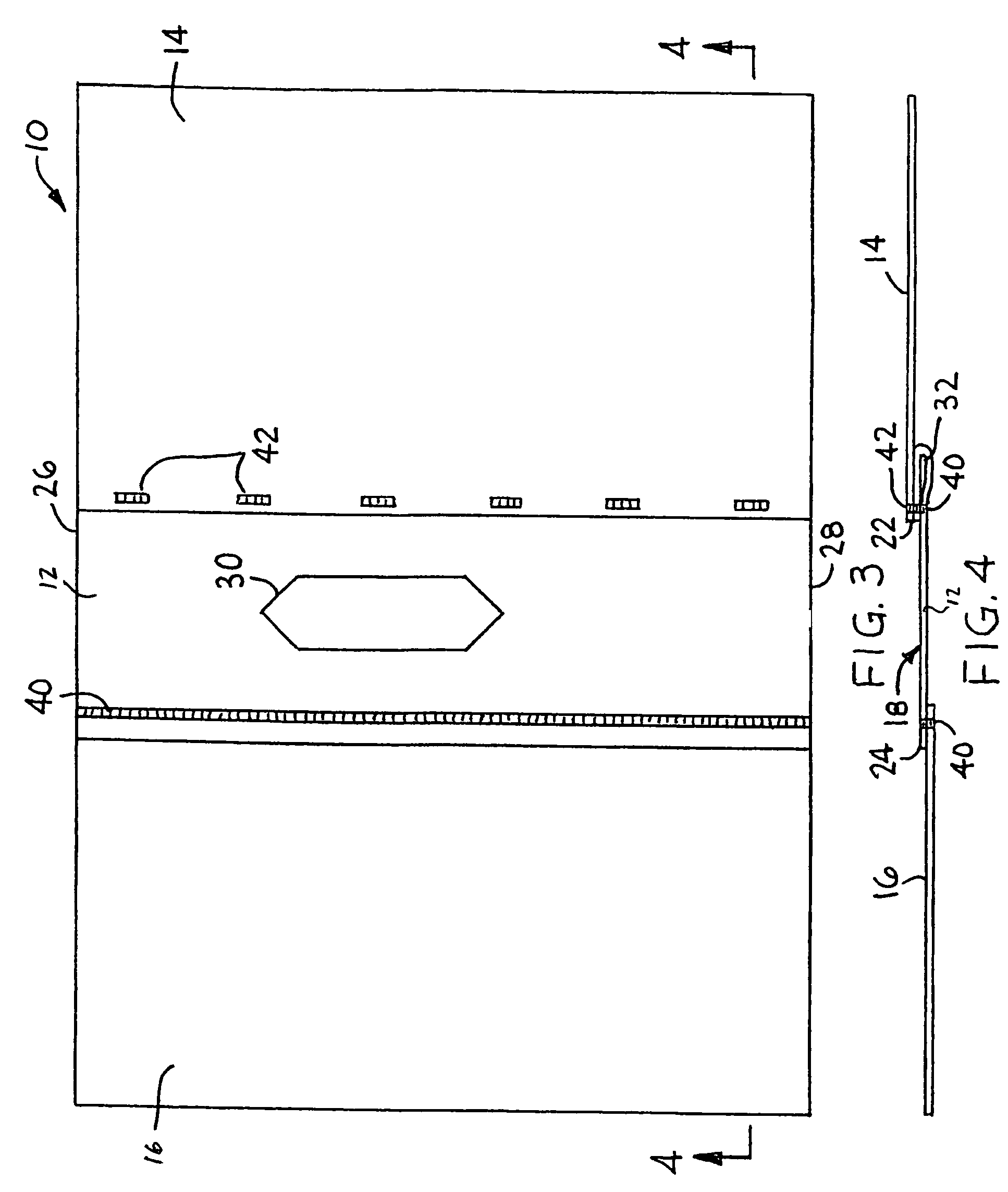Three piece drape with fluid diversion capabilities
a three-piece drape and capability technology, applied in the field of three-piece drapes with fluid diversion capabilities, can solve the problems of slipping situations that can occur, interfere with the sterile, and problems with the adhesive attachment between plastic fluid collection pouches and the top surface of surgical drapes, and achieve the effect of facilitating fluid removal
- Summary
- Abstract
- Description
- Claims
- Application Information
AI Technical Summary
Benefits of technology
Problems solved by technology
Method used
Image
Examples
Embodiment Construction
[0026]As used herein the following terms have the specified meanings, unless the context demands a different meaning, or a different meaning is expressed; also, the singular generally includes the plural, and the plural generally includes the singular unless otherwise indicated.
[0027]As used herein, all percentages, ratios and proportions are by weight unless otherwise specified.
[0028]As used herein, the terms “comprises”, “comprising” and other derivatives from the root term “comprise” are intended to be inclusive or open-ended terms that specify the presence of any stated features, elements, integers, steps, or components, but do not preclude the presence or addition of one or more other features, elements, integers, steps, components, or groups thereof. Accordingly, the term “comprising” encompasses the more restrictive terms “consisting essentially of” and “consisting of.”
[0029]As used herein, the term “fiber” generally refers to an elongated strand of defined length, such as st...
PUM
 Login to View More
Login to View More Abstract
Description
Claims
Application Information
 Login to View More
Login to View More - R&D
- Intellectual Property
- Life Sciences
- Materials
- Tech Scout
- Unparalleled Data Quality
- Higher Quality Content
- 60% Fewer Hallucinations
Browse by: Latest US Patents, China's latest patents, Technical Efficacy Thesaurus, Application Domain, Technology Topic, Popular Technical Reports.
© 2025 PatSnap. All rights reserved.Legal|Privacy policy|Modern Slavery Act Transparency Statement|Sitemap|About US| Contact US: help@patsnap.com



